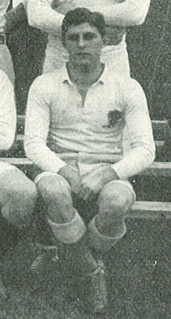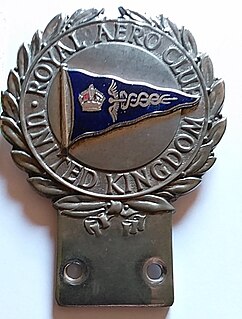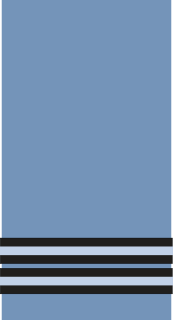
Cyril Nelson "Kit" Lowe, was an English rugby union footballer who held England's international try scoring record for over sixty years, a First World War flying ace credited with nine victories, and supposedly the inspiration for W. E. Johns' character "Biggles".
Captain George Edward Henry McElroy MC & Two Bars, DFC & Bar was a leading Irish fighter pilot of the Royal Flying Corps and Royal Air Force during World War I. He was credited with 47 aerial victories.
Thomas Falcon Hazell & Bar was a fighter pilot with the Royal Flying Corps, and later, the Royal Air Force during the First World War. Hazell scored 43 victories in 1917–18 making him the fifth most successful British "flying ace" of the war, and the third most successful Irish-born pilot, behind Edward Mannock and George McElroy, as well the only pilot to survive the war from both groups.
Henry Winslow Woollett DSO, MC & Bar was a British World War I flying ace credited with thirty-five aerial victories, and who continued to serve in the Royal Air Force during the 1930s.
Group Captain Geoffrey Hilton "Beery" Bowman, was an English World War I fighter ace credited with 32 victories. After attaining the rank of major in the Royal Flying Corps, he later became a group captain in the Royal Air Force.
Percy Jack Clayson was a British flying ace in the First World War credited with 29 victories.
Flight Lieutenant James Anderson Slater was a British First World War flying ace, credited with 24 aerial victories. He served in the Royal Air Force (RAF) as an instructor after the war until killed in a flying accident.
Air Vice Marshal Sir Matthew Brown Frew, was a First World War flying ace, credited with 23 aerial victories, who went on to serve as a senior officer in the Royal Air Force and South African Air Force during the Second World War.
Squadron Leader Loudoun James MacLean was a British World War I flying ace credited with five aerial victories.
Group Captain Roger Henry Gartside Neville, was a British World War I flying ace credited with five aerial victories. He remained in the RAF post war serving as a squadron commander, and then as a staff officer, until after the end of the World War II.
Flight Lieutenant Geoffrey William Hemming was a British World War I flying ace credited with six aerial victories.
Flight Lieutenant Frank Neville Hudson was a British World War I flying ace credited with six aerial victories.
Wing Commander (rank) Noel Keeble was a British flying ace of the First World War, credited with six aerial victories.
Air Vice Marshal Geoffrey Arthur Henzell Pidcock, was a senior officer in the Royal Air Force. After becoming a flying ace in the First World War, credited with six aerial victories, he remained in the newly created [oyal Air Force after the war, serving as a senior officer during the Second World War and specializing in the development of armaments. He retired in 1951.
Group Captain Harry King Goode was an English officer of the Royal Air Force. During World War I he was a flying ace credited with 15 aerial victories. He remained in RAF service until retiring in 1941.
Air Commodore Ernest William Norton was a British air officer of the Royal Air Force, who began his military career as a World War I flying ace credited with nine aerial victories. He remained in the RAF after World War I. He rose through the ranks in a mixture of domestic and foreign assignments until he was appointed Air Officer-in-Charge at RAF Headquarters in Singapore on 28 December 1937. By 7 September 1941, he was serving as an Air Commodore for Fighter Command in Britain. He retired from the RAF on 24 February 1944.
Air Vice Marshal Colin Peter Brown & Bar was a Scottish officer who began his career in the Royal Naval Air Service during the First World War, before transferring to the Royal Air Force (RAF). A flying ace credited with 14 aerial victories, he remained in the RAF and served throughout the Second World War, retiring in 1954.
Major Thomas Francis Netterville Gerrard was a British World War I flying ace credited with 10 aerial victories. He died following a post-war equestrian accident.
Flight Lieutenant Charles John Sims, was an English World War I flying ace credited with nine aerial victories. His most notable victory saw him shoot down an enemy aircraft that crashed into another, giving Sims a double win. However, his Distinguished Flying Cross was awarded for his courage in ground attack missions.
Air Commodore Herbert Victor Rowley was a British air officer of the Royal Air Force. He was a World War I flying ace, credited with nine aerial victories while serving in the Royal Naval Air Service, but became a member of the Royal Air Force when the RNAS was consolidated into it. Rowley remained in the RAF post-war, serving through World War II, until retiring in 1944.










